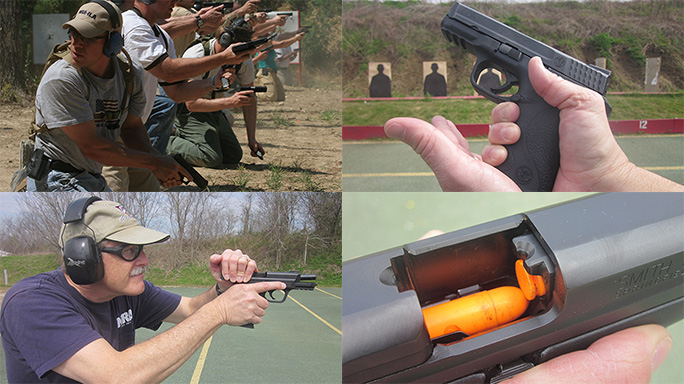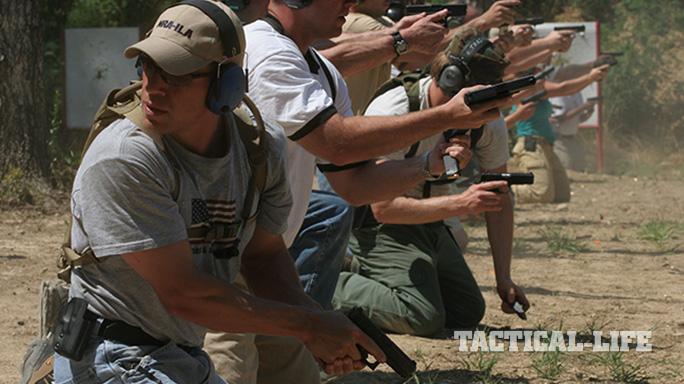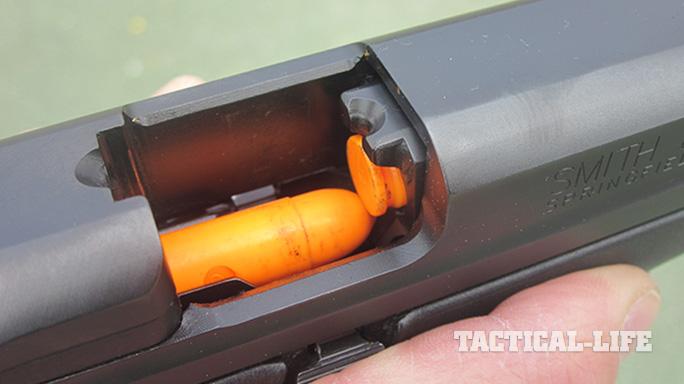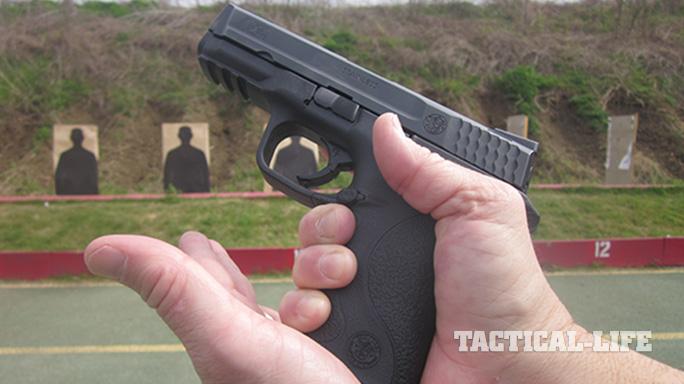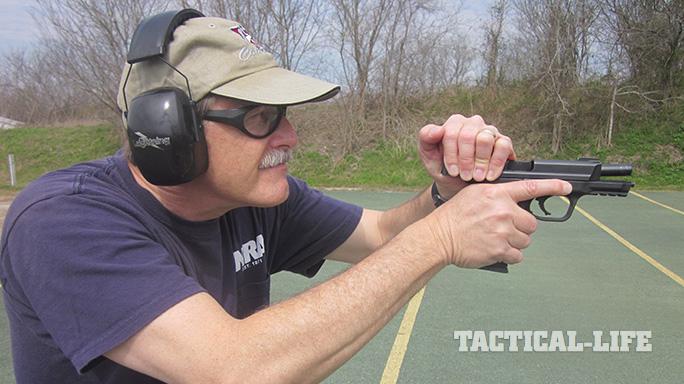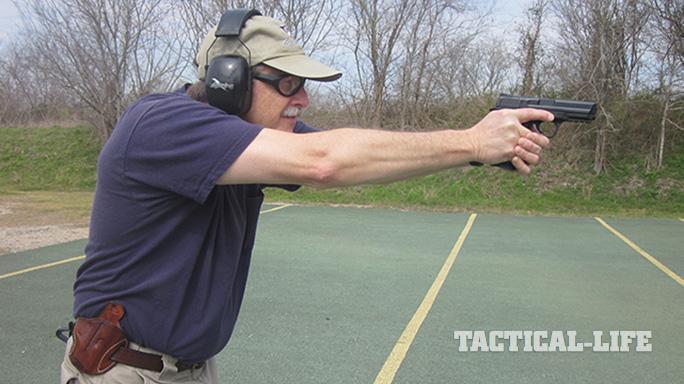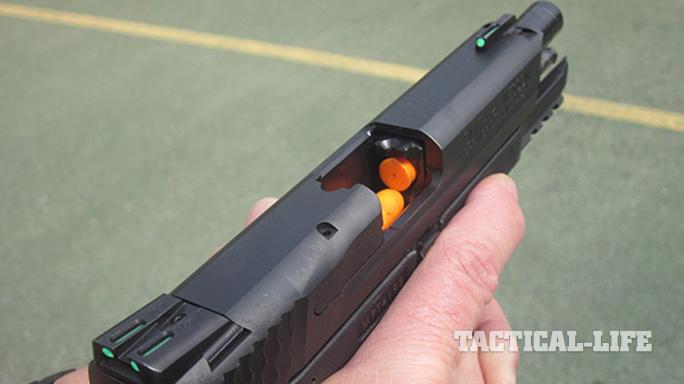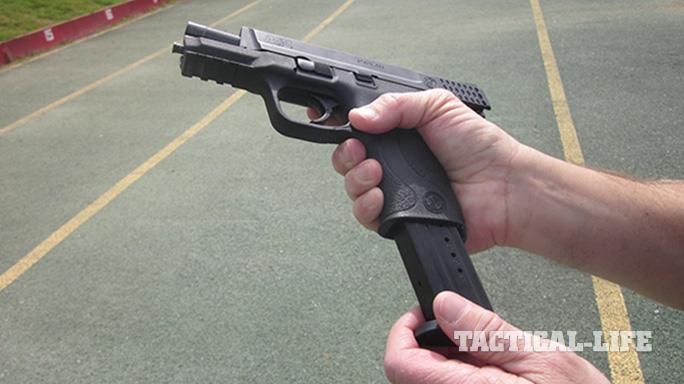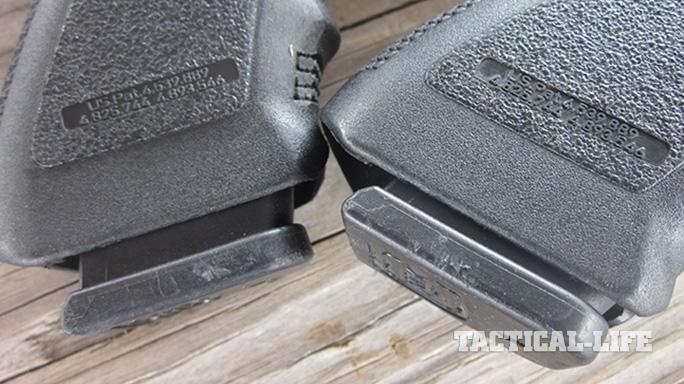Everything manmade will fail. I don’t care how expensive or well maintained your car, your watch or your gun is—eventually, it will fail. There are several common types of pistol malfunctions, and you need to know how to quickly clear them to get back in the fight. More than 90 percent of pistol malfunctions are magazine related. The most common gun malfunction? A magazine that is not fully seated.
Every time you load your pistol, you should rack the slide to put a round in the chamber, then eject the magazine and top it off. If the gun holds 10 rounds in the magazine, why would you walk around with only nine rounds in it? The problem is that it is more difficult to seat a fully loaded magazine. The round on top is compressed down when it pushes up against the bottom of the slide. Inevitably, sometimes the magazine won’t be pushed in until it fully “clicks” into place. The first time the gun fires, it will kick out the empty case, but it won’t pick up the next round and feed it into the chamber. The second shot becomes a click instead of a bang.
Advertisement — Continue Reading Below
Gun Malfunction Clearance Drill 1: Tap, Rack, Target
The first solution for this begins with a proper loading sequence. After you load your pistol and reholster it, pop out the magazine and top it off. Then, reseat it in the mag well. Always give it a tug to make sure it is fully seated. Even after doing this, you can still have a magazine that isn’t fully seated if the magazine release button accidentally gets bumped. The second shot will be the dreaded click.
The three steps for fixing this gun malfunction are tap, rack and target. First, release your grip with your support hand and bend the elbow of your strong arm. Your weapon should be back in your “work zone,” directly in front of your face. You should be able to see your weapon and see your target by simply changing your focus. Do not bring the weapon down—you will look down and inevitably lose sight of your threat. Cant the weapon slightly toward your support side, slightly skyward, and roll it so that you can see the bottom of the magazine. With the base of the palm of your support hand, tap the bottom of the magazine with authority. There is no reason to be gentle here. This will reseat the magazine if it isn’t seated already.
- RELATED STORY: 3 Tips To Improve Your Weak Side Shooting
The second step is to rack the slide. This chambers a new round. It can also clear an empty case out of the chamber if it did not fully extract last time. There are several methods for racking the slide. Whichever you choose, do it the same way every time.
Advertisement — Continue Reading Below
I recommend rolling the pistol inboard as far as you can until the gun is almost upside down. Grasp the back of the slide where most pistols have cocking serrations and rack the slide to the rear vigorously. Let your thumb and forefinger slide off of the rear of the slide to keep yourself from “riding” the slide back forward. Sliding your hand off of the rear allows the full strength of the recoil spring to drive the slide forward and chamber a new round. If you “ride” the slide forward, the spring may not have enough strength to fully chamber the next round. Remember, move the gun around your hand, not your hand around the gun. Rolling the gun inward takes less effort and time than moving your hand from the bottom of the magazine to the top of the slide.
Finally, reassess your target. As you roll the pistol back upright and reestablish a good two-handed grip, shift your focus back to your target to see if follow-up shots are needed to stop the threat. We used to call this immediate-action drill a “tap, rack, bang.” However, you may not always need to fire another shot after your gun malfunction has been cleared. We changed “bang” to “target” to help remind us to evaluate our target before we pull the trigger again.
Gun Malfunction Clearance Drill 2 & 3: Double Feeds
Occasionally, you will come across faulty ammo. I have seen factory ammo that had hard primers and even primers installed upside down that didn’t fire. A “stovepipe” is when an empty casing gets caught by the slide before it has fully ejected. With the slide out of battery, it cannot fire. A “tap, rack, target” maneuver will clear every one of these pistol malfunctions. This should be your immediate response, and it should be conducted without even looking to see what caused the malfunction. This will get your weapon back into the fight at least 90 percent of the time.
Advertisement — Continue Reading Below
However, there are those times when a “tap, rack, target” response doesn’t fix the problem. The next most common gun malfunction is a “double feed.” A double-feed occurs when a case (loaded or empty) is stuck in the chamber, the slide is back and it is trying to push another round into the chamber as it comes forward. The rear round can’t go in and the front round can’t come out. No amount of tapping or racking will clear this gun malfunction.
There are two slightly different methods for clearing this jam. The first is “lock, rip, work, load, rack, target.” Lock the slide to the rear. This relieves the pressure on your magazine and allows you to remove it. Rip the magazine out while depressing the magazine release button. Work the action by quickly slingshotting the slide to the rear at least three times. This should clear that round out of the chamber. Now load a magazine into the mag well, rack the slide and reassess your target.
- RELATED STORY: 5 Strategies For Effectively Completing a Tactical Reload
The slight variation is instead of locking the slide to the rear, simply pull it to the rear while depressing the magazine-release button. A firm shake downward will often drop the magazine out of the gun. Then work the slide, load the new magazine, etc. This second variation is slightly faster. Guys on tactical teams usually prefer it, but they usually have several more magazines on their belt that they can use to reload their pistol. The one that landed on the ground is simply left there.
Advertisement — Continue Reading Below
If you are in plainclothes and have only one or no backup magazine, use the first technique and secure the magazine after you rip it out. After you rip the magazine out of the pistol, secure it somewhere so you can use it to reload. Some people can hold it between their ring and middle fingers on their dominant hand. Others find it easier to jam into a pocket or down the front of their pants. After you work the slide, use that mag to reload.
Drills for clearing stoppages should be practiced regularly. Fortunately, they are easy to work into almost any type of shooting exercise.
Get some plastic, dummy rounds. Yes, they will occasionally break after extended use, but they are cheap and it won’t bother you nearly as much when you lose a few of them as it will when you lose an expensive snap cap. Throw one or two dummy rounds interspersed into each magazine when you load up. Put them in different spots and then mix up your mags. Practice your “tap, rack, target” drill until it becomes second nature. Start slowly and do it right every time. Too many shooters get flustered and they remember to rack the gun, but they forget to tap the magazine first.
Advertisement — Continue Reading Below
Set up double-feed malfunctions by slipping a dummy round into the chamber and then inserting a loaded magazine and releasing the slide. Don’t forget to tap, rack and target before you lock, rip, work, load, rack and target.
This article was originally published in “Combat Handguns” May/June 2017. To order a copy, visit outdoorgroupstore.com.
